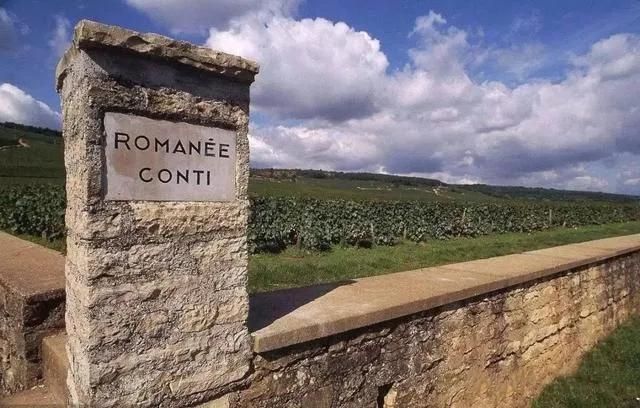The fate of innovators is tortuous, and the fate of challengers is bumpy.
When the "Wine Emperor" Robert Parker was in power, the mainstream style in the wine world was to produce wines with heavy oak barrels, heavy taste, more fruity aroma and higher alcohol content that Parker liked. Because this kind of wine conforms to the mainstream values of the wine industry, it is especially easy to win awards in various wine awards. Parker represents the trend of the wine industry, representing a rich and unrestrained wine style.
This kind of wine may be Parker's favorite style, so that era is called "Parker's era". Parker was a veritable wine emperor at the time. He had the right to life and death over wine. As long as he opened his mouth, he could directly raise the reputation of a winery to a higher level. The style he liked was the style that wineries competed for.
But there are always people who want to resist, who will be non-mainstream, and who will stick to the tradition left by their ancestors and not follow the trend, even if the wine they produce cannot be sold at a high price; these people are those who "want to produce good wine from the bottom of their hearts". Chateau owners, they are innovators and challengers under the current wine values.
Some of them are winery owners who only follow the tradition: I will do what my grandfather did. For example, Burgundy has always produced elegant and complex wines. Typical Romanee-Conti represents elegant and delicate wines. vintage style.
Some of them are winery owners who are bold and innovative, and do not stick to the previous dogma: for example, when making wine, they insist on not using commercial yeast, but only using traditional yeast, which is typical of some top famous wineries in Rioja, Spain; even if such wine will have some "unpleasant" " taste, but the complexity and quality will rise to a higher level;
They also have challengers to the current rules, such as the Australian wine king and the brewer of Penfolds Grange, Max Schubert. After he returned to Australia after learning winemaking techniques from Bordeaux, he firmly believed that Australian Syrah could also develop advanced aging aromas and exhibit extraordinary qualities after aging.
When he first brewed Grange, he received more contemptuous ridicule, and even the winery ordered him to stop brewing Grange. But Schubert believed in the power of time. He did not follow the decision of the winery, but secretly produced, brewed, and aged himself; and then handed over the rest to time. In the 1960s, finally in the 1960s, Grange proved the strong aging potential of Australian wines, and Australia also had its own wine king.
Grange represents an anti-traditional, rebellious, non-dogmatic style of wine.
People may applaud innovators, but few people pay for them.
Innovation in wine is more complex. For example, the method of picking grapes is to choose manual picking or machine picking? For example, the method of pressing grape juice, is it pressed with stems or softly pressed? Another example is the use of yeast. Most people admit that native yeast (no other yeast is added when making wine, and the yeast carried by the grape itself is allowed to ferment) can ferment more complex and changeable aromas, but wineries have market pressure requirements. Had to consider commercial yeasts that would maintain a consistent winery style.
Most people only think about the benefits of hand-picking, but don't want to pay for it.
Going a little further, now is the post-Parker era (counting from Parker's retirement), and more and more wineries are beginning to reflect on their previous winemaking strategies. In the end, should we brew the full-bodied and unrestrained style of the "trend" in the market, or should we brew a more elegant and delicate wine style, or an innovative and more imaginative style?
The Oregon region of the United States gave the answer. They brewed Pinot Noir that is as elegant and delicate as Burgundy in France; Hawke’s Bay in New Zealand gave the answer. They also brewed Pinot Noir in the under-appreciated New Zealand The Bordeaux style of the first growth.
Hawke's Bay's "Classified Chateau", I will write a special article about New Zealand later.
In the south of the European Pyrenees, a place called Rioja, there is also a winery that gave the answer:
Spanish wines give people the impression that many, many oak barrels have been used. If 6 months is not enough, it will be 12 months, and if 12 months is not enough, it will be 18 months, because the locals like the advanced aroma brought by more aging.
But there is a winery who wants to say no. They have brewed a wine that you can understand when you drink it. It has fresh and bursting fruit aromas, which is fragrant and has more richness. Traditional wine.
It is different from the simple fruity red wines of the general New World, but similar to the pure, rich and impressive style of New Zealand. If I use two words to describe it, it would be "pure", the aroma is very clean, and the finish is also very clean.
This is a Rioja Tempranillo full of rebellion and surprise.
It took the New Zealand Wine Association 20 years to finally determine their promotional language, which is "Pure", which is a style, a winemaking philosophy, and the attitude of all wineries in New Zealand. I think this is a very "pure" Spanish wine with a New Zealand attitude.

Post time: May-24-2023

